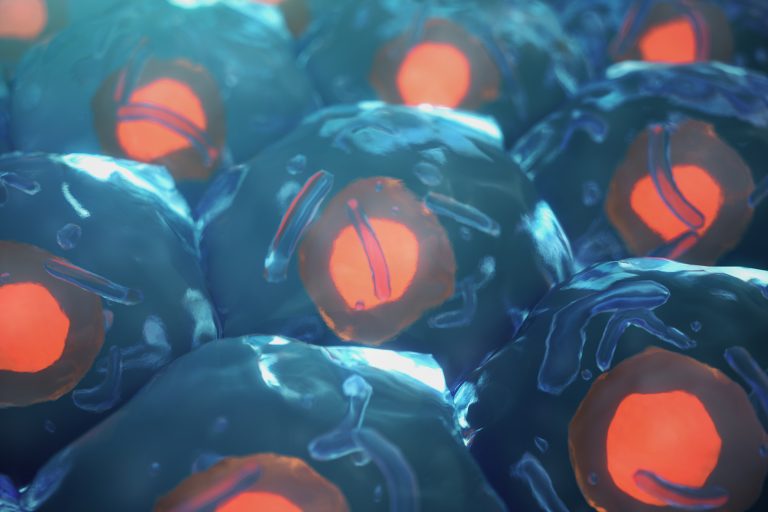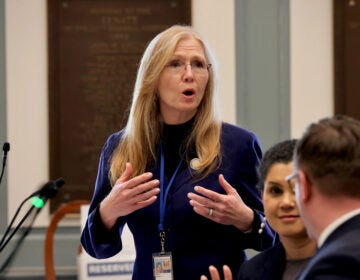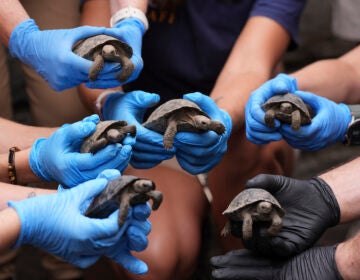CHOP developing Pediatric Cell Atlas to better understand childhood health and disease
The atlas would map every cell in a child’s body and advance understanding of how and why pediatric diseases occur.

3D Illustration of Human Cells (Bigstock/Usis)
Researchers know surprisingly little about how the tissues and cells in our bodies do their jobs. Information about even the most basic functions – such as a complete list of which cells are at work in the liver or the lungs – remains a mystery.
“We don’t have that right now, which should actually be shocking to most people,” said Deanne Taylor, director of bioinformatics at Children’s Hospital of Philadelphia.
That’s why Taylor is spearheading the Pediatric Cell Atlas, which would map every cell in a child’s body — a reference tool for what healthy tissues look like that could be used for comparison with diseased tissues.
Last year, the Chan-Zuckerberg Initiative, Facebook CEO Mark Zuckerberg’s philanthropic foundation, announced that it would hand out $15 million to fund a Human Cell Atlas to map every cell in the human body. But that project will focus on adults, and the findings won’t necessarily be applicable to pediatric patients, whose cells operate a little differently than those of adults.
“Their programs of growth and their programs of function are going to be different than adults,” Taylor said. “And we see that across the board, in many different diseases and many different therapies.”
Children’s cells are doing two things at once: growing and functioning. So a child’s liver cells, while also performing most of the functions of an adult liver, are developing and changing in a way that adult liver cells are not.
That means that research on adult cells or diseases will not necessarily meaningfully improve an understanding of pediatric health and diseases, disciplines that historically have been underfunded compared with adult research. Taylor said the information gap is a big problem for pediatric research.
“Not having the information makes it difficult to do more studies because you don’t have the information,” she said. “I think it’s just compounding over time.”
Tapping cutting-edge technology
The Pediatric Cell Atlas would use single-cell technology, which wasn’t available for widespread use until about three years ago. The technology allows scientists to break a tissue into its component cells and look at the relationship between the cells — and also what each cell is doing in terms of how the tissue is functioning.
Kai Tan, an associate professor at CHOP who is working with Taylor, has been using single-cell technology to detect rare cancer stem cells, which traditional technology cannot locate.
“That can actually be directly translated to the clinic, patient care, and for prognosis,” he said. “We are at an inflection point of technology.”
Yes, this is basic research that might not immediately turn into a clinical application, Tan said, but a lot of patient treatment and drug development grow out of this sort of work.
“A lot of the discoveries [are] based on fundamental research,” he said. “That cannot be emphasized enough.”
At the moment, project collaborators include Cincinnati Children’s Hospital, Boston Children’s Hospital, the Broad Institute of MIT and Harvard, the Yale University School of Medicine, and Beatrix Children’s Hospital in the Netherlands, among others.
The group currently does not have a funding source for the project that cuts across all groups; right now, each organization has its own funding stream. That’s a challenge.
“It costs money to get tissues from surgery,” Taylor said. “You need somebody there to both do the surgery, store the material, get it to biobanking, and eventually into analysis.”
There is also the challenge of getting consent from patients to use that tissue for research, as well as getting researchers to share their data openly.
Benefiting adults as well as children
But to do some of the large-scale studies that would really move the needle in terms of research and development, scientists will need a lot of tissue and data.
For example, Taylor sees an opportunity for the Pediatric Care Atlas to help researchers better understand on a scientific level how a child’s environment might affect his or her health — those “social determinants” of health. But to do that, the PCA would need more contributors than it now has, to reach a number of tissue samples that would yield meaningful data.
Taylor and Tan also noted that discoveries about how a child’s biology works might advance treatment and understanding of diseases in adults.
“Understanding why children’s tissues do so well in healing and regeneration in wound healing would … benefit adult health as well,” Taylor said.
Given the proper resources, Taylor said, the Human and Pediatric Cell Atlases together could change the way we think about health and disease.
“It’s kind of like a Human Genome Project taken up one level, which is not only understanding what the sequences are, but the function of those sequences in the context of the cells and tissues,” she said.
WHYY is your source for fact-based, in-depth journalism and information. As a nonprofit organization, we rely on financial support from readers like you. Please give today.





